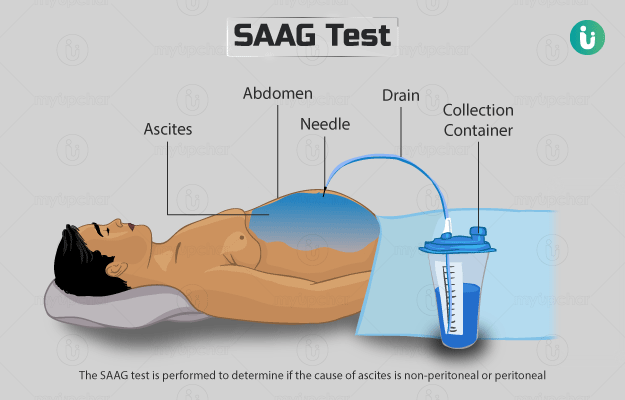What is Serum Ascites Albumin Gradient (SAAG) test?
Ascites is abnormal fluid build-up in the peritoneal cavity - the abdominal and pelvic cavities together are called the peritoneal cavity. Healthy men usually don’t have much fluid in their peritoneal cavity. However, women may have up to 20 mL of fluid depending on the phase of the menstrual cycle they are in.
Peritoneal fluid is actually filtered plasma (the liquid part of blood after separation of RBCs). It acts as a lubricant and a medium to transport electrolytes into the abdomen.
Ascites occurs when there is more than 25 mL of fluid in the peritoneal cavity. This fluid build-up may either be due to a condition of the peritoneum - the outer layer of the peritoneal cavity - or a side effect of other health conditions such as liver disease or heart disease.
In case of liver conditions, there is an imbalance in albumin, the major protein present in plasma, which is responsible for maintaining fluid distribution in the body. Albumin imbalance is one of the reasons for ascites.
Serum Ascites Albumin Gradient is a useful tool to determine the cause of ascites when it is associated with a liver condition.
SAAG is actually the difference in concentration of albumin (a protein) in the serum (plasma without clotting proteins) and the albumin in the ascitic fluid, both obtained on the same day.
The formula to calculate SAAG is as follows:
SAAG = albumin serum − albumin ascites
































